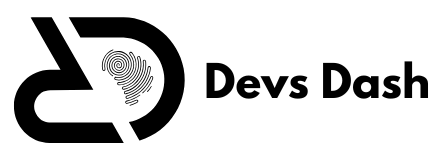Leopard Color Hex: Codes, and Palette

Leopard Color Hex
The Leopard Color Hex stands out as a fascinating blend of colors inspired by the mesmerizing pattern of leopard fur. This pattern, defined by rich golden browns, deep blacks, and warm beige hues, has a prominent place in art, fashion, and design. Represented in hexadecimal code, the Leopard Color Hex brings nature’s elegance into the digital space, making it easy for designers and enthusiasts to incorporate these tones into their projects.
Understanding Leopard Color Hex
Hexadecimal color codes, often referred to as hex codes, are a way to represent colors using a six-character combination of numbers and letters. These codes start with a hashtag (#) and are widely used in web design, graphic design, and other creative industries. The Leopard Color Hex is no exception, serving as a digital representation of the colors seen in leopard fur.
For instance, golden-brown tones may be coded as, while the deep black spots are represented as #000000. These codes allow precise replication of leopard patterns, ensuring consistency across digital and physical media.
The Origin of Leopard Color Hex in Nature
The inspiration for the Leopard Color stems directly from nature. Leopards, known for their striking rosette-patterned coats, exhibit a color palette that blends camouflage with beauty. The golden-brown base serves as the perfect backdrop for the bold black spots, while lighter shades of beige add contrast.
Digital designers and developers sought to mimic this iconic pattern, leading to the creation of Leopard Color codes. These codes not only capture the aesthetic appeal but also allow the tones to be seamlessly used across various platforms.
Why Designers Love Leopard Color Hex
Versatility in Design
The Leopard Hex offers incredible flexibility. Whether it’s for a website, a clothing line, or interior decor, this palette fits a variety of styles. The rich tones bring warmth, while the contrasting black adds depth.
Connection to Nature
Using the Leopard Color Hex evokes a sense of nature and wildlife, making it an excellent choice for projects focused on sustainability, conservation, or adventure themes.
Popularity in Fashion
Leopard print has long been a staple in the fashion world. By translating these patterns into Leopard Color codes, designers ensure that these timeless prints can be reproduced digitally with ease.
How to Use Leopard Color Hex in Projects
Web Design
In web design, Leopard Hex can be used to create visually engaging backgrounds or accents. For example:
- Golden-brown (
#D4A373) as a background color adds warmth. - Black (
#000000) for text or borders to create sharp contrasts. - Beige tones (
#F5DEB3) offer a soft, neutral touch.
Graphic Design
Incorporating Leopard Hex codes into graphic designs can make them more dynamic. These codes are especially useful for creating logos, illustrations, or promotional materials that need a touch of wild elegance.
Home Decor and Interiors
For interior designers, the Leopard Color Hex palette translates beautifully into wallpapers, furniture fabrics, and decorative accessories. Using these tones creates a cozy, inviting space with a hint of exotic charm.
Tools for Finding Leopard Color Hex Codes
There are several tools available online to help identify and use Leopard Hex codes:
- Adobe Color Wheel: Allows users to create custom palettes based on Leopard Hex shades.
- Hex Color Picker: A simple tool for identifying and copying hex codes.
- Canva Color Generator: Ideal for integrating Leopard Color tones into designs.
Leopard Color Hex in Digital Branding
In the digital age, branding relies heavily on unique, recognizable aesthetics. The Leopard Color offers a bold yet natural palette, perfect for brands seeking to stand out. Many wildlife organizations, luxury brands, and adventure-themed businesses incorporate these colors into their logos, websites, and marketing materials.
Tips for Effective Use
- Combine Leopard Color Hex with complementary tones like forest green or deep maroon.
- Use the pattern sparingly to avoid overwhelming the viewer.
- Incorporate texture to mimic the look of leopard fur for added visual interest.
Psychological Impact of Leopard Color Hex
Colors influence emotions and perceptions. The Leopard Color, with its earthy tones, conveys warmth, stability, and sophistication. At the same time, the dramatic contrast of black suggests power and mystery. This combination makes the palette both inviting and intriguing, appealing to a broad audience.
Frequently Asked Questions
What is the Leopard Hex code for golden brown?
The code for golden brown often used in Leopard Hex is #D4A373. It captures the warm, earthy tone seen in leopard fur.
Why is the Leopard Color popular in design?
Its rich, natural tones evoke elegance and adventure, making it versatile for fashion, branding, and digital projects.
How can I incorporate Leopard Hex into a website?
Use golden brown for backgrounds, black for text or accents, and beige for highlights to create a balanced design.
Are there variations of the Leopard Color?
Yes, slight adjustments to the tones allow designers to customize the palette while maintaining its natural inspiration.
Can Leopard Color Hex be used in minimalist designs?
Absolutely. By focusing on one or two tones, such as golden brown and black, the palette can complement minimalistic styles.
Where can I find Leopard Color palettes?
Online tools like Adobe Color and Canva provide ready-to-use Leopard Color palettes for any design project.
Conclusion
The Leopard Color Hex is more than just a set of color codes; it’s a gateway to nature’s artistry. Whether used in digital designs, fashion, or interior decor, this palette offers endless possibilities for creativity. By understanding its applications and tools, designers can seamlessly incorporate Leopard Color into their projects, bringing a touch of the wild to every creation.







